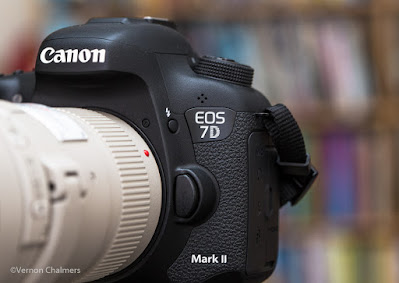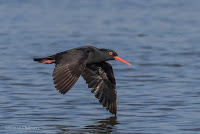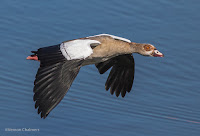Canon EOS 7D Mark II EOS iTR AF Testing, Woodbridge Island
As with all new Canon EOS Full Frame bodies - EOS 5D Mark IV / EOS 5DS(r) / EOS-1D X (II) - the Canon EOS 7D Mark II is equip with EOS iTR AF (Intelligent Tracking and Recognition Auto Focus) enabling the camera for potentially focusing faster on moving subjects when in AI Servo mode shooting moving subjects.
This EOS iTR AF function is supported by the detection capability of the RGB+IR metering sensor, which is working seamlessly with EOS iTR AF for allowing continuous tracking in AI Servo shooting mode.
According to Canon, EOS iTR AF should be enabled when photographing either a moving person (for face tracking) or moving subjects with a strong colour. Colour and face tracking provides a faster, more accurate focusing system.
The EOS 7D Mark II user manual (Setting the AF and Drive Modes: page 128) states that the camera will take longer to focus when EOS iTR AF is enabled in AI Servo mode and that the camera's maximum frames per second (fps) shooting of 10 fps will be reduced to 9.5 fps.
EOS iTR AF is only supported in Zone, Larger Zone AF or the 65-Point automatic selection AF on the Canon EOS 7D Mark II. The same Zones will be applicable in EOS iTR A-enabled the Full Frame EOS bodies (within the 61-Point AF systems).
Comparing face detection performance and AF against obstruction
Comparing face detection performance and AF against obstruction
Setting Up EOS iTR AF (On / Off)
EOS 7D Mark II Menu: AF Sub-Menu / Sub-Section 4: Auto AF pt sel: EOS iTR AF On / Off
Objective: To determine any shooting / image property changes and / or enhancements with the EOS iTR AF function enabled during my birds in flight photography. I've been shooting with the EOS 7D Mark II / EF 400mm f/5.6L USM lens for about two years without EOS iTR AF enabled. Time and reason enough for judging any AF tracking differences and / or improvements.
Equipment (Birds In Flight Photography)
- Canon EOS 7D Mark II DSLR camera body
- Canon EF 400mm f/5.6L USM Lens
- Lexar Professional 800x / 120MB/s 32GB CF Card
- Sandisk Extreme Plus SDHC™ UHS-I Card 95MB/s 32 GB
Exposure / Focus Settings
- Manual Mode Settings / Lens AF On
- Shutter speed: 1/5000s
- Aperture: f/5.6
- Focal length 400mm
- Auto-ISO (ISO 640)
- Continuous shooting mode (10 fps) / AI Servo
- AI Servo / AF Mode Option (Wide Zone AF / Case 1)
- Lens AF On / No IS / Handheld
Location / Conditions
I went out this morning (in excellent light and conditions) and spent about two hours shooting around Woodbridge Island, Cape Town - all the usual birds; geese, ducks, egrets and a few oystercatchers.
Birds in Flight
I'm adding two sets of 6 consecutive images here of two birds flying at pace, first an African Oystercather, which is at times difficult to track due to it black feathers (against the blue water) and then an Egyptian Goose flying towards me (tightly cropped in post-processing).
Initial AF Findings
I could sense no difference in any AF behaviour ito speed, locking on or tracking conditions irrespective of bird, speed and or background colour / textures.
The jury is still out how effective the EOS iTR AF function is for birds in flight. Of what I've experienced today I can honestly say that it made no real difference (when compared to similar shots with EOS iTR AF disabled). I will keep it enabled and to observe any changes over time ito different light conditions and perhaps smaller / bigger and different colour birds.
African Oystercatcher with EOS iTR AF (Click to enlarge / slide show)
Canon EOS Setup and Tips For Birds in Flight Photography
Egyptian Goose with EOS iTR AF (Click to enlarge / slide show)
Birds in Flight Cape Town Canon EOS 7D Mark II Image Gallery
Birds in Flight Photography Cape Town












